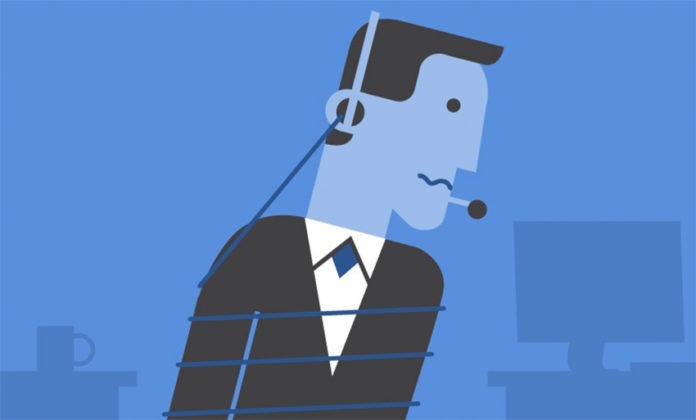There’s one major reason why you’re still making cold calls: they work. Sales expert Alen Mayersays cold calling is “an effective and powerful sales tool” — when done correctly. In a study byDiscoverOrg, 75% of 1,000 IT senior executives reported that they’d made decisions to book an appointment or attend an event as a result of cold calls they’d received.
From poor delivery to a bad script, it’s easy to mess up a cold call. But steer clear of these 5 mistakes and you may be surprised with how successful your cold calls can be.
1. Ignore the Follow-up Process
HubSpot shares that although 80% of sales take five follow-ups, 44% of salespeople gave up on a prospect after following up once. Know that your job doesn’t end after one conversation (or hang up). Perseverance is the name of the game. The same HubSpot piece explains that while it took between three and four attempts to reach a prospect on the phone in 2007, it took closer to eight times by 2014. Knowing that you’ll have to reach out several times will help you keep your expectations in check and be strategic about each call. Sales trainer Mark Hunter emphasizes the importance of leaving good voicemails. These should be between 8–14 seconds long, repeat your phone number twice, and not mention that you are calling back.
2. Slack off on Research
They may not know who you are, but if you’ve done your research, you know who they are. Sales professional Art Sobczak has coined this as “Smart Calling.” As a cold caller, it is part of your job to learn as much as possible about the prospect through readily available tools like Google before jumping on the phone. Everyone has a digital footprint, and every salesperson should become familiar with their clients’. Investigate what you and your potential client may have in common using social media. According to Vorsight, prospects are 70% more likely to make an appointment during a cold call if they are in the same LinkedIn group as their salesperson.
Sobczak also recommends using social engineering — taking advantage of other resources at the company before contacting the actual prospect. Asking assistants or colleagues of your prospect about specifics (such as best times to call or what the decision-making process is like at the company) will better prepare you for the cold call. Don’t be lazy: do your research and impress your prospect with your proactive preparation. Show him or her you care about the conversation, and you’ll be able to skip the basics to quickly get to the meat of your conversation.
3. Butcher Your Elevator Pitch
It’s a cold call, so people are likely to hang up unless you immediately grab their attention. An article from Inc argues that callers have 10 seconds (about two sentences) before the prospect decided to hang up or keep listening. Make those seconds count with a pitch that quickly showcases value.
UC Davis created this helpful guide you can use to create or refine your elevator pitch. They recommend cutting out jargon and being sure to answer your client’s natural question: What’s in it for me?
4. Forget Details
According to Forbes Insight, 58% of buyers reported that sales representatives did not know how to effectively answer their questions. Don’t be caught off guard by what your sales prospect may want to know. Try to brainstorm 5–10 potential questions your client may have for you before you make you call, and practice answering them.
Never underestimate the power of “because.” Sobczak calls this the “justification statement” — you should do X (i.e., schedule a demo) because it will provide Y value (show you how awesome our product is). When you can justify to your prospect that something is worth his or her time, the client is more likely to say yes. Use specifics to draw your prospect in and turn “no” into “yes.”
5. Ignore the Data
There’s tons of data out there that will help you incorporate best practices into your cold calls. For example, a study from the Kellogg School of Management reported that the best times for cold calls are at 8:00–9:00 am or 4:00–5:00 pm, with lunchtime being the worst time to call. Hubspot shared compelling data about the effect of text messaging in sales conversions — companies that receive an SMS during the sales process have a conversion rate that is 40% higher than companies that do not receive these. You can find this advice from leading publications such as Harvard Business Review, Forbes, HubSpot, and Salesforce.
Cold calls work — when done properly. Once you realize which mistakes you’re making, they are actually pretty easy to correct. With these tips in your back pocket, don’t be afraid to pick up the phone and dial away!




